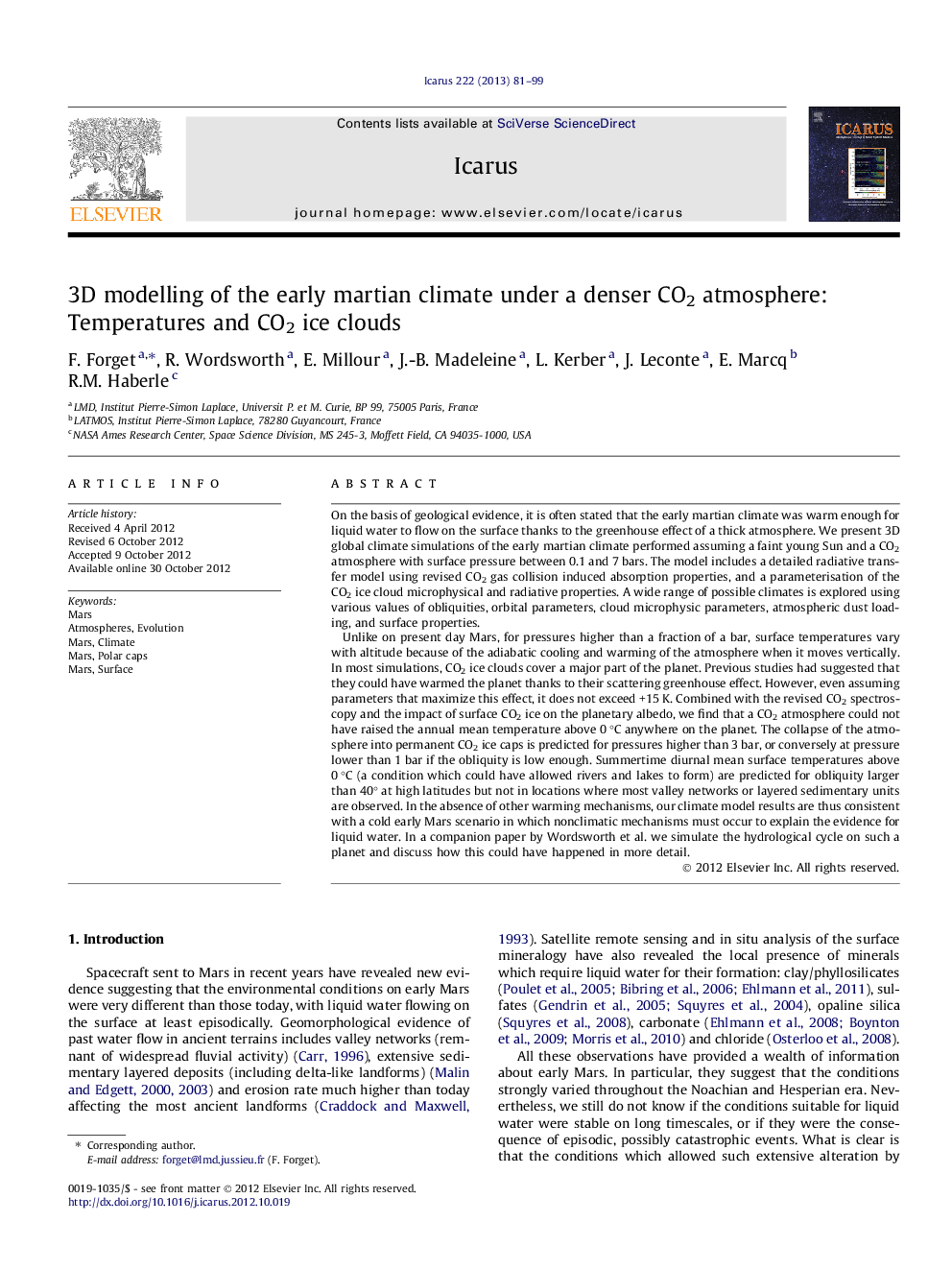| کد مقاله | کد نشریه | سال انتشار | مقاله انگلیسی | نسخه تمام متن |
|---|---|---|---|---|
| 1773721 | 1021144 | 2013 | 19 صفحه PDF | دانلود رایگان |

On the basis of geological evidence, it is often stated that the early martian climate was warm enough for liquid water to flow on the surface thanks to the greenhouse effect of a thick atmosphere. We present 3D global climate simulations of the early martian climate performed assuming a faint young Sun and a CO2 atmosphere with surface pressure between 0.1 and 7 bars. The model includes a detailed radiative transfer model using revised CO2 gas collision induced absorption properties, and a parameterisation of the CO2 ice cloud microphysical and radiative properties. A wide range of possible climates is explored using various values of obliquities, orbital parameters, cloud microphysic parameters, atmospheric dust loading, and surface properties.Unlike on present day Mars, for pressures higher than a fraction of a bar, surface temperatures vary with altitude because of the adiabatic cooling and warming of the atmosphere when it moves vertically. In most simulations, CO2 ice clouds cover a major part of the planet. Previous studies had suggested that they could have warmed the planet thanks to their scattering greenhouse effect. However, even assuming parameters that maximize this effect, it does not exceed +15 K. Combined with the revised CO2 spectroscopy and the impact of surface CO2 ice on the planetary albedo, we find that a CO2 atmosphere could not have raised the annual mean temperature above 0 °C anywhere on the planet. The collapse of the atmosphere into permanent CO2 ice caps is predicted for pressures higher than 3 bar, or conversely at pressure lower than 1 bar if the obliquity is low enough. Summertime diurnal mean surface temperatures above 0 °C (a condition which could have allowed rivers and lakes to form) are predicted for obliquity larger than 40° at high latitudes but not in locations where most valley networks or layered sedimentary units are observed. In the absence of other warming mechanisms, our climate model results are thus consistent with a cold early Mars scenario in which nonclimatic mechanisms must occur to explain the evidence for liquid water. In a companion paper by Wordsworth et al. we simulate the hydrological cycle on such a planet and discuss how this could have happened in more detail.
► We present 3D simulations of the possible early Mars climate.
► We assume a faint young Sun and a thick CO2 atmosphere with CO2 clouds.
► We explore various obliquities, orbits, cloud parameters and dust loading.
► The mean temperature cannot be raised above 0 °C anywhere on the planet.
Journal: Icarus - Volume 222, Issue 1, January 2013, Pages 81–99